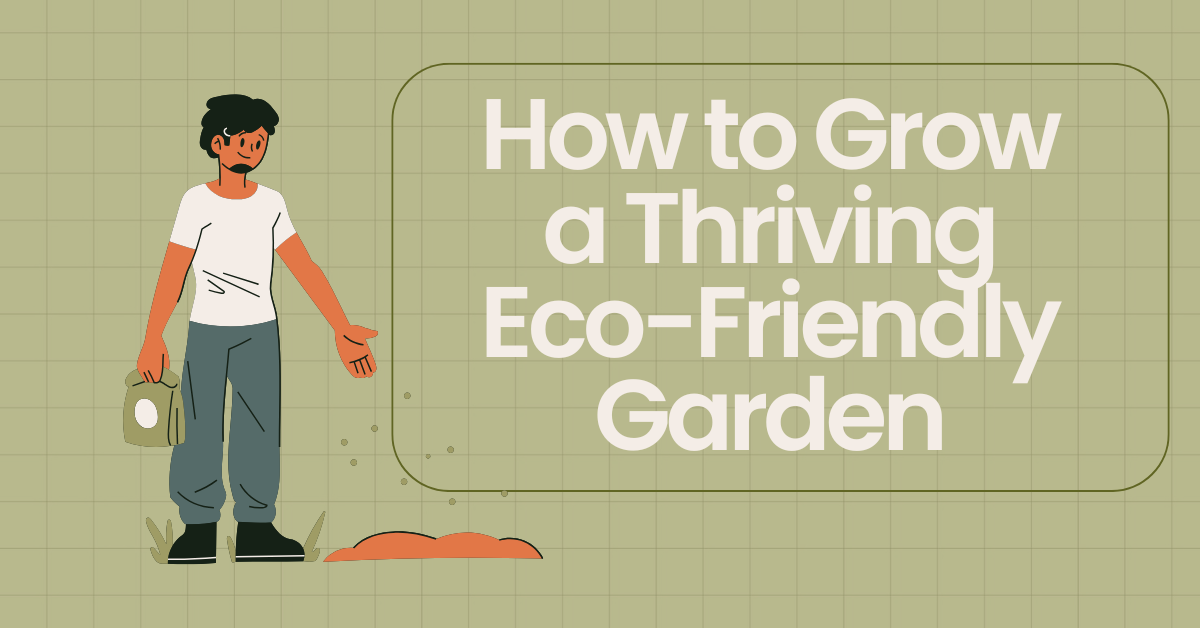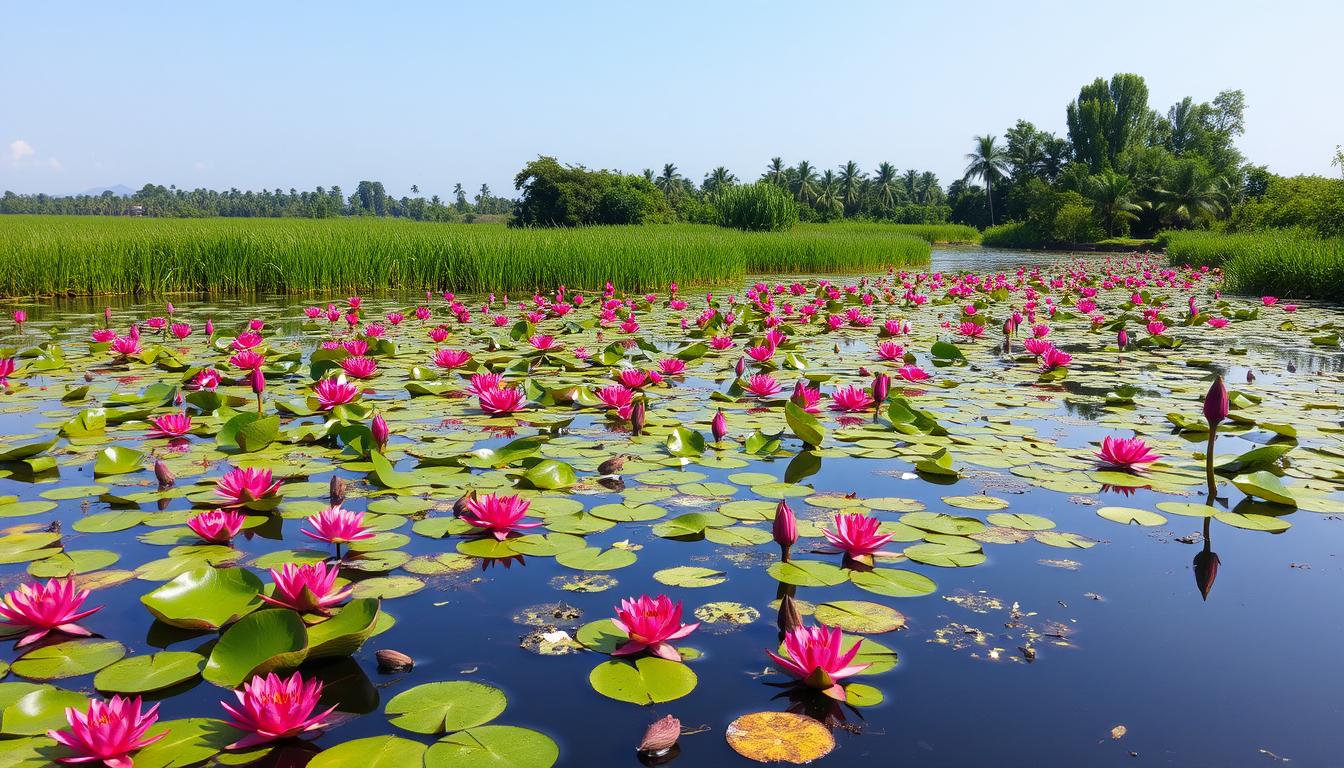Introduction
Gardening has always been my escape. There’s something magical about digging your hands into the soil and watching life sprout from tiny seeds. But over the years, I’ve realized that traditional gardening methods relying on chemical fertilizers, endless watering, and pesticides aren’t just hard on the planet; they’re hard on us. That’s why I switched to sustainable gardening. It’s not just a trend; it’s a way to grow food, flowers, and a healthier Earth at the same time.
If you’re new to this, don’t worry. I’ve made every mistake in the book (trust me, I once overwatered my succulents into mush). But through trial and error, I’ve learned how to create a garden that’s not only beautiful but also kind to the environment. Let’s dive in and explore how you can do the same.
1. Healthy Soil: The Heart of Your Garden
Soil isn’t just dirt it’s alive. Think of it as a bustling ecosystem teeming with microbes, worms, and fungi. When I first started gardening, I treated soil like an afterthought. Big mistake. Healthy soil is the foundation of a thriving garden, and here’s how to build it:
- Compost Like a Boss: I used to toss veggie scraps in the trash until I realized they could become nutrient-rich compost. Now, I keep a bin in my backyard for everything from banana peels to coffee grounds. It’s like free fertilizer!
- Mulch Is Your Best Friend: Last summer, I mulched my tomato plants with straw, and the results were incredible. Not only did it keep the soil moist, but it also kept weeds at bay. Plus, it breaks down over time, feeding the soil.
- Skip the Tilling: I used to think tilling was essential, but it turns out it disrupts soil structure and kills beneficial organisms. Instead, try layering compost and mulch on top of the soil. It’s easier on your back, too.
- Cover Crops for the Win: During the off-season, I plant clover or rye in my garden beds. They prevent erosion, suppress weeds, and add nutrients to the soil when I chop them down in spring.
2. Water Wisely: Save Every DropWater is precious, especially in drought-prone areas. Here’s how I’ve learned to use it wisely:
- Drip Irrigation Is a Game-Changer: I switched to a drip irrigation system last year, and it’s been a lifesaver. It delivers water directly to the roots, reducing waste and keeping leaves dry (which helps prevent disease).
- Rain Barrels Are a Must: I installed a rain barrel under my gutter, and it’s amazing how quickly it fills up during a storm. I use the collected water for my thirsty plants, like squash and cucumbers.
- Choose Drought-Tolerant Plants: My cousin in Arizona swears by native plants like agave and prickly pear. They thrive with little to no watering, and they look stunning, too.
- Water Early or Late: I’ve found that watering at dawn or dusk reduces evaporation. Plus, it’s a peaceful way to start or end the day.
3. Pick the Right Plants
Not all plants are created equal. Some are high-maintenance divas, while others are low-key and resilient. Here’s what I’ve learned:
- Go Native: Native plants are adapted to your local climate, so they require less water and care. Plus, they support local wildlife. I planted milkweed in my garden, and now I have monarch butterflies visiting every summer.
- Perennials Are Worth It: While annuals need to be replanted every year, perennials like asparagus and berry bushes come back year after year. My raspberry patch is on its seventh season, and it’s still going strong.
- Companion Planting Works Wonders: I plant basil next to my tomatoes to repel pests, and marigolds near my squash to deter beetles. It’s like having a natural pest control squad.
4. Ditch the Chemicals
I used to reach for chemical pesticides at the first sign of trouble, but I’ve since learned that there are better, safer ways to deal with pests:
- Attract Beneficial Insects: Ladybugs and lacewings are natural predators of aphids. I plant dill and yarrow to lure them into my garden.
- Neem Oil Is a Lifesaver: Mix 2 teaspoons of neem oil with 1 teaspoon of dish soap in a quart of water, and spray it on your plants at dusk. It’s effective against pests but safe for bees.
- Handpick Pests: It’s not glamorous, but it works. I’ve spent many mornings picking squash bugs off my plants and dropping them into soapy water.
5. Reduce, Reuse, Recycle
Gardening doesn’t have to be wasteful. Here’s how I’ve learned to reuse and recycle:
- Turn Trash into Treasure: I use egg cartons and toilet paper rolls as seed starters. They’re biodegradable, so I can plant them directly in the soil.
- Build with Pallets: Old pallets make great vertical planters. I nailed one to my fence and filled it with herbs it’s both functional and stylish.
- Grasscycling: Instead of bagging grass clippings, I leave them on the lawn. They decompose and feed the soil, saving me money on fertilizer.
6. Encourage Biodiversity
A diverse garden is a resilient garden. Here’s how I’ve made mine a haven for wildlife:
- Plant for Pollinators: Bees and butterflies love lavender, sunflowers, and borage. I plant them in clusters to make it easier for pollinators to find them.
- Create Habitats: I built a simple bug hotel by stacking sticks, pinecones, and drilled logs in a shady corner of my garden. It’s now home to solitary bees and other beneficial insects.
7. Rethink Your Lawn
Lawns don’t have to be environmental villains. Here’s how to make yours more eco-friendly:
- Mow Less, Mow High: I set my mower to 3-4 inches. Taller grass shades the soil, reducing water needs and crowding out weeds.
- Try a Clover Lawn: Dutch white clover stays green without chemicals and feeds bees. My kids love the tiny flowers, and I love how low-maintenance it is.
FAQ: Your Questions, Answered
Q: Can I garden sustainably on a budget?
A: Absolutely! Start with compost it’s free. Save seeds from your favorite plants, and swap cuttings with friends. I’ve grown entire flower beds from cuttings!
Q: My soil is terrible. What should I do?
A: I’ve been there. Mix in compost and coarse sand to improve drainage. Raised beds filled with a mix of topsoil, compost, and peat moss are another great option.
Q: Are coffee grounds good for plants?
A: Yes! Sprinkle used grounds around acid-loving plants like blueberries or roses. Just don’t overdo it moderation is key.
Q: How do I keep deer out of my garden?
A: Plant garlic, onions, or lavender around the edges. For extra protection, try a motion-activated sprinkler. It’s worked wonders for me!
Q: Can I use rainwater for my veggies?
A: Definitely! Just avoid watering the leaves if your roof has old shingles. Stick to soil-level irrigation to be safe.
Final Thoughts
Sustainable gardening isn’t about being perfect it’s about making small, meaningful changes. Start with one thing, like composting or planting natives, and build from there. My first attempt at an eco-friendly garden was far from flawless, but over time, it’s become a thriving, buzzing paradise that gives back to the Earth. Yours can, too.









